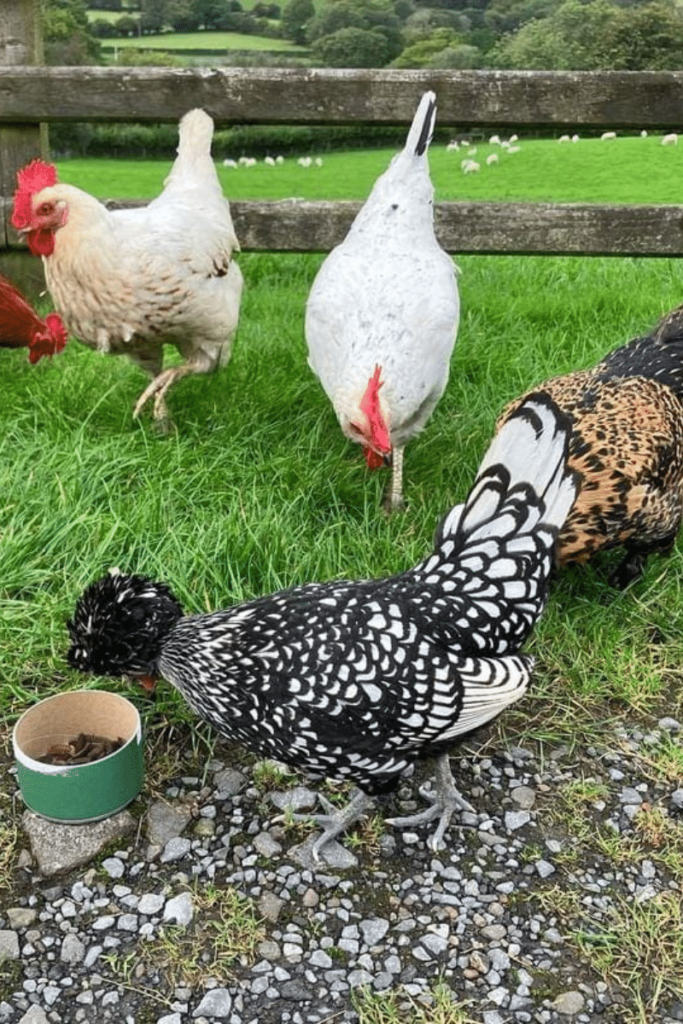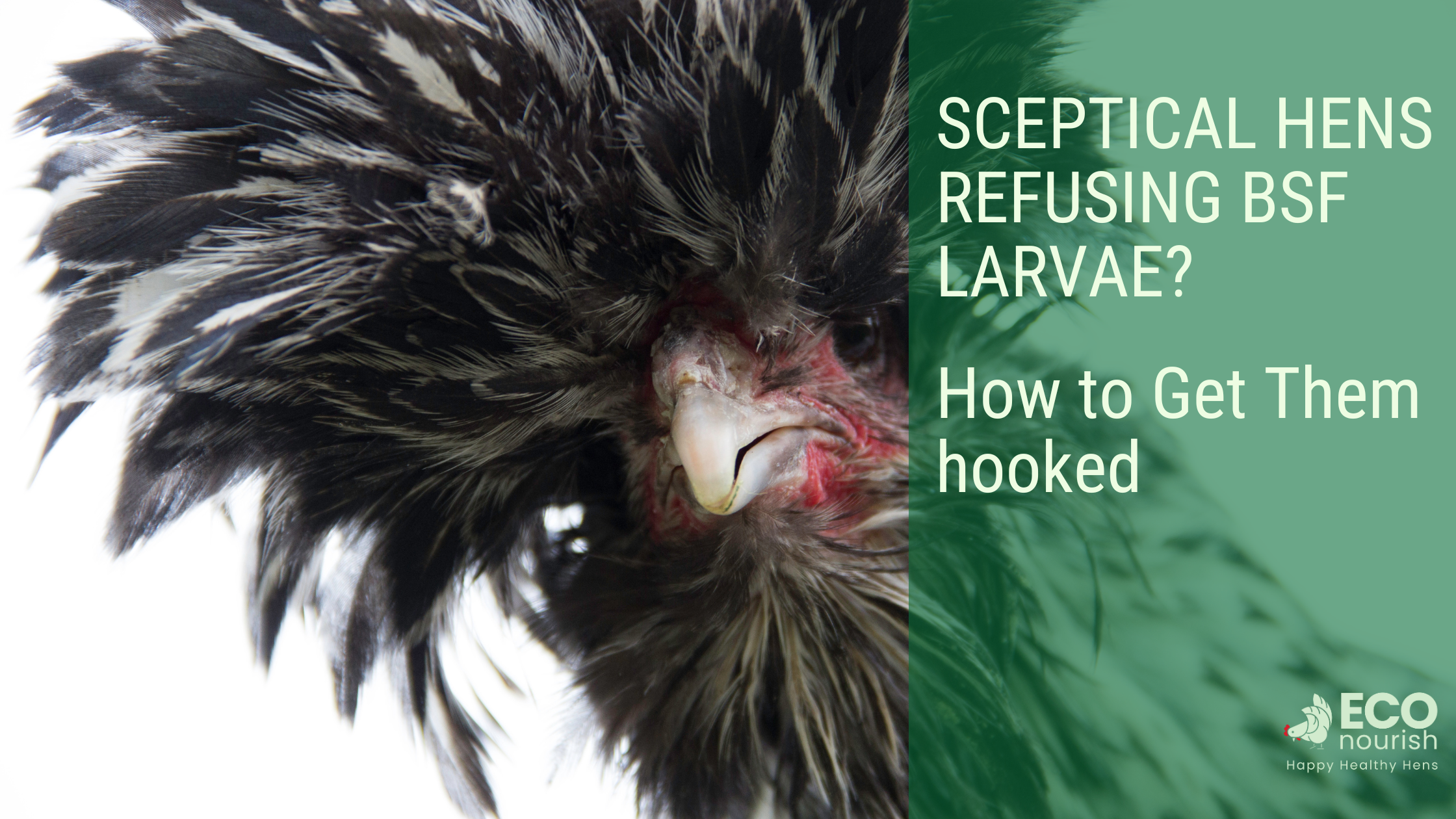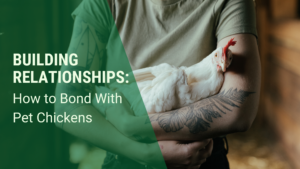You may have noticed your chickens dallying about with enthusiasm when you let them loose to peck and scratch. Insects, after all, are a universally favoured treat in the poultry world. But what about when you introduce something scrumptiously nutritious but novel, like live Black Soldier Fly larvae? Hens refusing BSF larvae is a rare occurrence, but chickens, like humans, have their own dining preferences and quirks, and while it might seem strange, not all chickens will immediately recognise these wriggly morsels as their next favourite snack.
Most chickens’ natural instincts drive them to pounce on any creepy crawlies that move. Like voracious dinosaurs, they’ll gobble up anything that wriggles, crawls or flies. But there are some exceptions to this rule!
Table of Contents
Nervous Nellies and Obedient Flock Followers
Some chickens may be more sceptical or cautious about new items introduced to their diet—including BSFL. And in the world of chickens, the top hens hold considerable sway. Like school children who look up to the ‘cool kids’ for cues, lower-ranking chickens take leads from the dominant ones. Suppose your most respected hens turn up their beaks at the larvae. The others will likely follow suit, assuming something is amiss with these unfamiliar bugs.
Understanding Chicken Hierarchy and Communication
Chickens are communicative birds. They signal danger, food sources, and general commands within their pecking order, which is critical for survival. When top hens show interest in a food source, it’s akin to ringing the dinner bell—everyone perks up and heads over. But these top hens can just as quickly signal their flock mates to steer clear of something they’re unsure about. That’s one reason your new black soldier fly larvae offering might receive a lukewarm reception initially. If your chickens are cautious, don’t presume they don’t (or won’t) like the larvae. They just haven’t learned how amazing they are yet! Many customers have found that with persistence, initial reluctance soon leads to zealous foraging.
Become a pecking order pro with our Complete Guide to Pecking Order
The Benefits of Feeding Black Soldier Fly Larvae
Convincing your flock to dine on black soldier fly larvae isn’t just a matter of expanding their culinary horizons. These larvae are nutrient powerhouses. They’re packed with protein, fat, and essential amino acids that can help in feather growth, egg production, and overall health. Not to mention, they’re a sustainable food source that can be farmed with minimal environmental impact. There are also lots of benefits to their mental health and wellbeing. To find out more, take a look at our Guide to Calci Worms for Chickens.
Methods to Introduce Black Soldier Fly Larvae
Start slowly & Offer Larvae Sparingly
We always recommend scatter-feeding larvae. This is because scatter feeding offers the most benefits in stimulating natural instincts and reducing stress.
Start by sprinkling some larvae on the ground in our hens’ general direction, avoiding muddy spots. Feeding in the morning has been scientifically shown to increase activity long after the larvae have been eaten – leading hens to enjoy lovely relaxation in the afternoons. The perfect mix of activity and R&R for hens.
Feed in the Morning Before Any Other Treats
Research showed that the optimum time to feed live larvae is in the morning. The morning activity sets the pace of their day – with activity continuing after the larvae have been pecked up, followed by an afternoon of relaxation and perching. Feed the larvae first thing when the hens are hungry and haven’t filled up on alternative treats – and watch them explore and peck around afterwards.
Use a Special Feeding Area
Create an exclusive spot or circumstance where you only provide this new delicacy. By containing the larvae in a particular place, your chickens will learn that they’re in for something special when they head there.

Hide the larvae in piles of leaves or hidey holes in the enclosure.
Chickens LOVE to forage – so enhance the foraging fun by hiding larvae and other treats in piles of leaves, long grass, or in little nooks and crannies in the run. The larvae will wriggle out and surprise your hens – whose instincts should tell them to pounce! Omlet perches have handy treat trays, so hens can come across tempting treats as they perch, stimulating their curiosity enough to have a go.
Always Tempt the Top Hens First
If you can get your alpha hens interested in the larvae, the others are sure to follow. Try to entice these leaders separately, perhaps with extra coaxing or by scattering small amounts of the larvae into their favourite spots.
Be Persistent and Patient
First and foremost, don’t be disheartened if your chickens don’t immediately take to the larvae. They may need time to learn that these skittering insects are edible. Regularly offering larvae in their presence is the best way to introduce them to this treat. With repetitive exposure, most chickens will eventually have a taste. Before you know it, they’ll be gobbling them down with gusto.
Hand Feed (If Your Flock is Tame)
We always recommend scatter feeding first and being patient and persistent for the hens to enjoy their first feeding. Pressure can be off-putting. But hand-feeding is an option for those with a tame and trusting flock. It establishes a direct trust between you and the chickens. Seeing the larvae in your hand and understanding that you’re offering something can pique a chicken’s curiosity and bravery. The larvae cannot bite and are dry and inoffensive, but handling isn’t for everyone! Gloves, of course, are an option to create a barrier between you and the bugs.

Aural and Visual Entertainment
Like toddlers, chickens are entranced by movement and music. Lay the larvae out on a flat, metallic surface – a foil tray is perfect! When the chickens peck at them, they’ll enjoy the satisfying sounds, providing extra sensory stimulation. This will also attract other chickens to have a go at music-making.
Mix with Familiar Foods
Chickens are creatures of habit. Mixing the larvae with foods they already know and love can be a bridge towards acceptance. Take their regular feed or a treat you know they can’t resist and sprinkle some larvae in with it. They’ll associate the larvae with the yummy food they’re already accustomed to – and will soon show a preference for it!
Slow Down the Action With DIY Larvae Drop Feeders
You can create a drop feeder out of an old ECOnourish tube! Drill holes in the sides and bottom are large enough for larvae to drop out easily (around 1cm will be perfect). Drill two holes at the top of the tube and suspend the tube in the run from sisal rope. Voila! Recycled larvae peck toy piques your flock’s interest as their interaction reveals some intriguing rewards.
Some of our customers have created larvae drop feeders out of kitchen/toilet roll tubes. Look at this Instagram reel from @mad4hens showing the larvae slowly dropping out through the toilet roll holder stuffed with lettuce.
Keep the Experience Positive
Ensure your chickens’ first experiences with black soldier fly larvae are positive. Avoid stressful conditions when introducing larvae, as stress can prevent them from trying new things.
Reduce Competition
Lower-pecking-order chickens might be apprehensive about approaching a new food if they feel they’ll be pecked by higher-ranking ones. Removing dominant hens from the scene or scattering them in separate areas can reduce competitive tension.
Understanding Change from a Chicken’s Perspective
Remember, any change in their environment or diet can be a source of stress for chickens. Your hens aren’t being picky; they’re simply wired to be cautious— a trait that, in the wild, could mean the difference between life and death. But with gentle coaxing and a bit of chicken psychology, you can guide your flock to embrace and enjoy live black soldier fly larvae. Then there’ll be no stopping them!
Do you have any larvae-feeding tips? What was your experience of introducing the larvae to your flock? Share your comments below – we always love hearing from you. And if you need any support with larvae feeding, email us at hello@econourish.co.uk any time.




